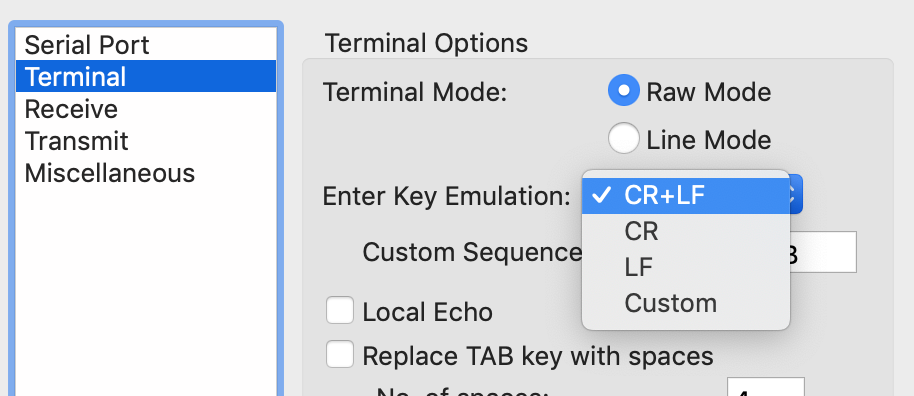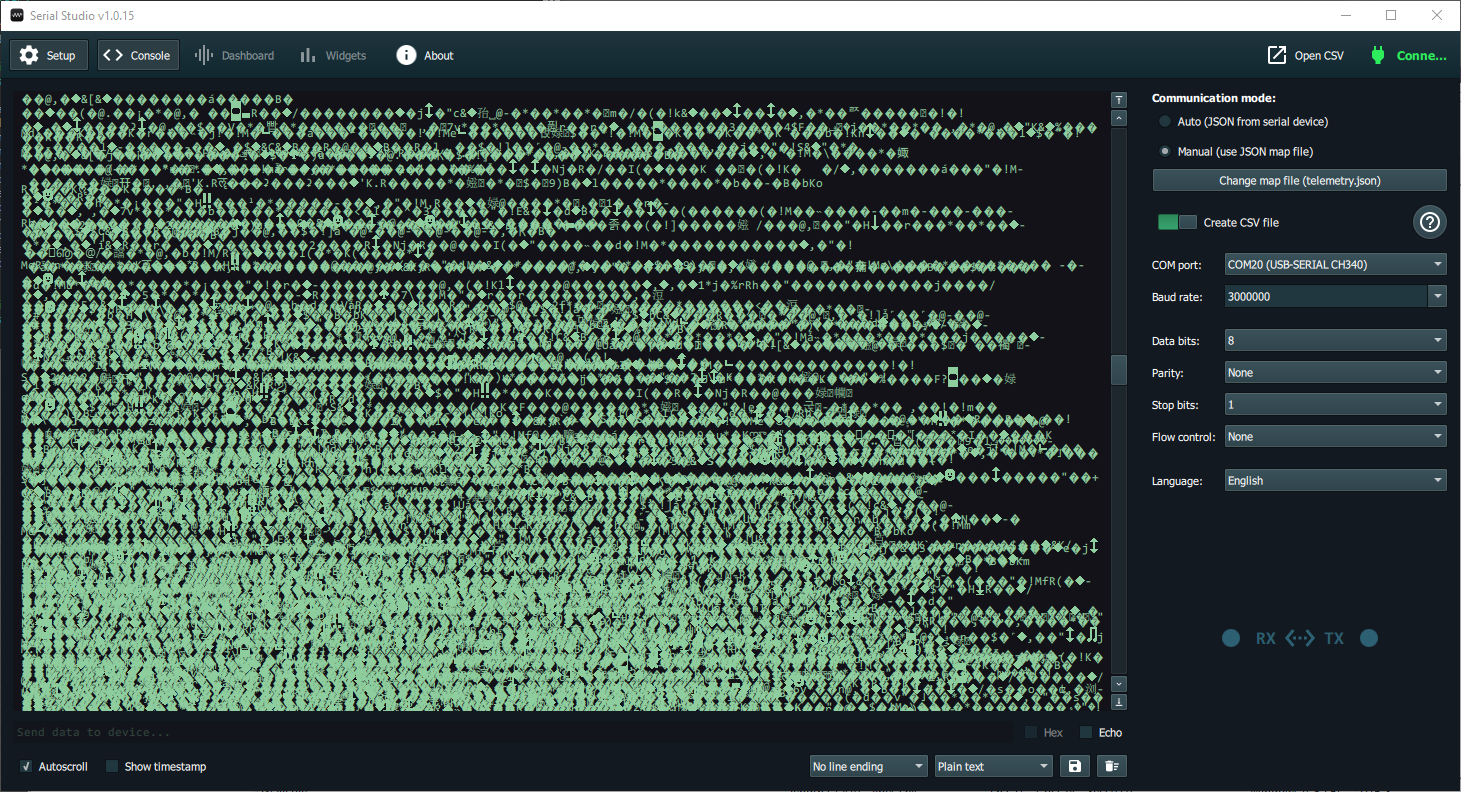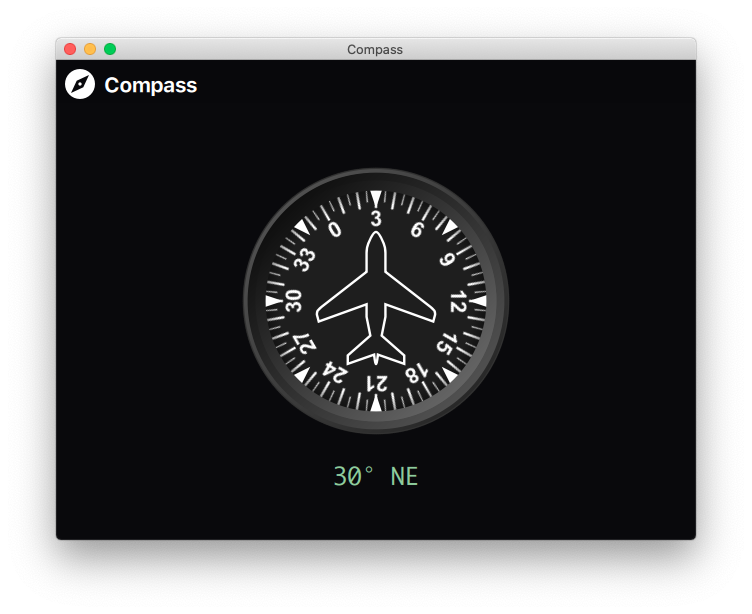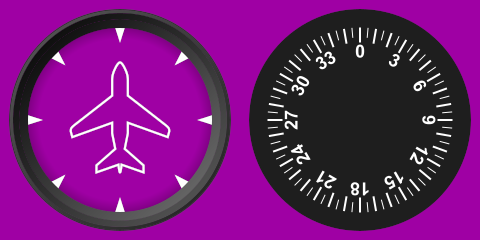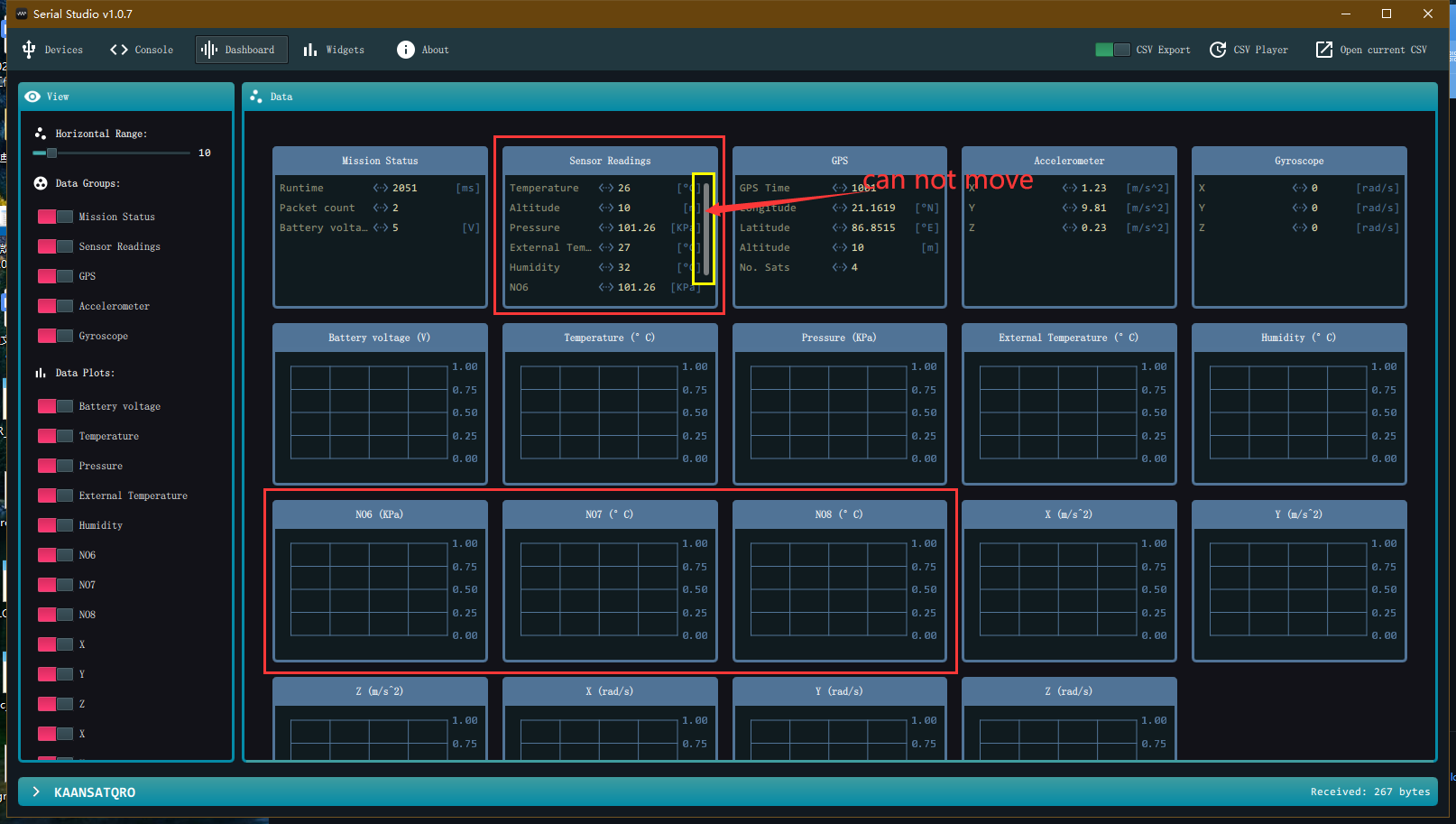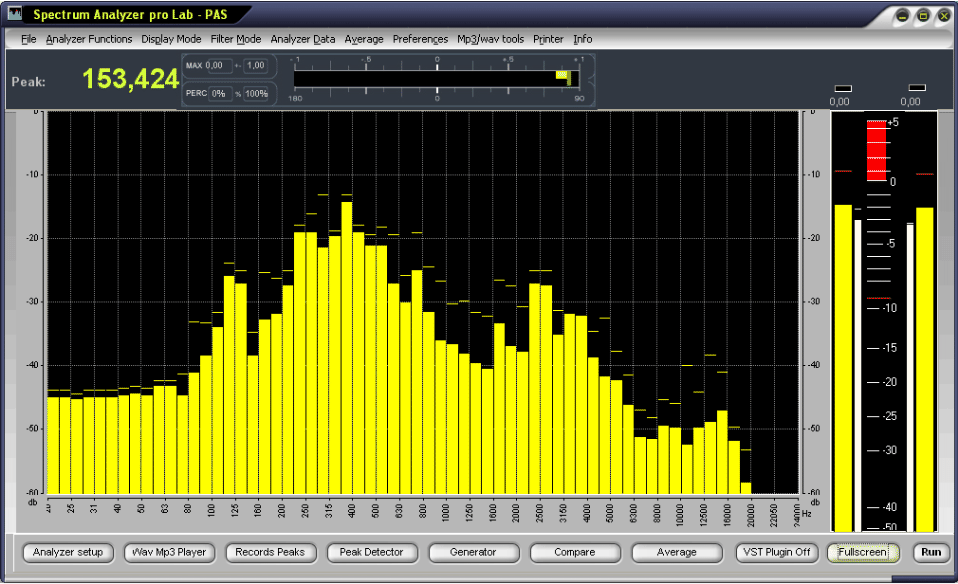Serial Studio is a simple, multi-platform, and multi-purpose data visualization program that allows embedded developers to visualize, analyze, and represent data generated from their projects and devices. It does not require the need to write project-specific visualization software.
Over my many CanSat-based competitions, I found myself writing and maintaing several Ground Station Softwares for each program. However, I decided that it would be easier and more sustainable to define one flexible Ground Station Software that let developers define how each CanSat presents data using an extensible communication protocol for easy data visualization. Developers can also use Serial Studio for almost any data acquisition and visualization project outside of CanSat, now supporting data retrieval from a hardware serial ports, software serial ports, MQTT, Bluetooth Low Energy (BLE) and network sockets (TCP/UDP).
Read this in other languages: Español 简体中文 Deutsch
You can download and install Serial Studio for your preferred platform.
GNU/Linux users must enable the executable flag before attempting to run the application:
chmod +x SerialStudio-1.1.1-Linux.AppImage
./SerialStudio-1.1.1-Linux.AppImageYou can also use the AppImageLauncher to integrate Serial Studio with your system.
Arch Linux users can install serial-studio-git from the aur, e.g. with aurutils:
aur fetch serial-studio-git
aur build
sudo pacman -S serial-studio-gitThis project is released under the MIT license, for more information, check the LICENSE file.
The only requirement to compile the application is to have Qt installed in your system. The desktop application will compile with Qt 6.3.2.
On GNU/Linux systems, you will also need to install libgl1-mesa-dev in order to compile the application.
Full list of used Qt modules:
- Qt SVG
- Qt Quick
- Qt Widgets
- Qt Networking
- Qt Serial Port
- Qt Print Support
- Qt Quick Widgets
- Qt Quick Controls 2
This repository makes use of git submodule. In order to clone it, execute these commands on your Terminal:
git clone https://github.com/Serial-Studio/Serial-Studio
cd Serial-Studio
git submodule init
git submodule update
Alternatively, just run:
git clone --recursive https://github.com/Serial-Studio/Serial-Studio
Once you have Qt installed, open Serial-Studio.pro in Qt Creator and click the "Run" button.
Alternatively, you can also use the following commands:
qmake
make -j4
This is a simplified diagram that explains how the different Serial Studio modules interact with each other. You can find the DOXYGEN documentation by clicking here.
If you find Serial Studio suitable for your needs, please consider giving me a tip through PayPal. Or, if you prefer to buy me a drink personally instead, just send me a DM when you visit Querétaro, Mexico, where I live. I look forward to meeting you!









